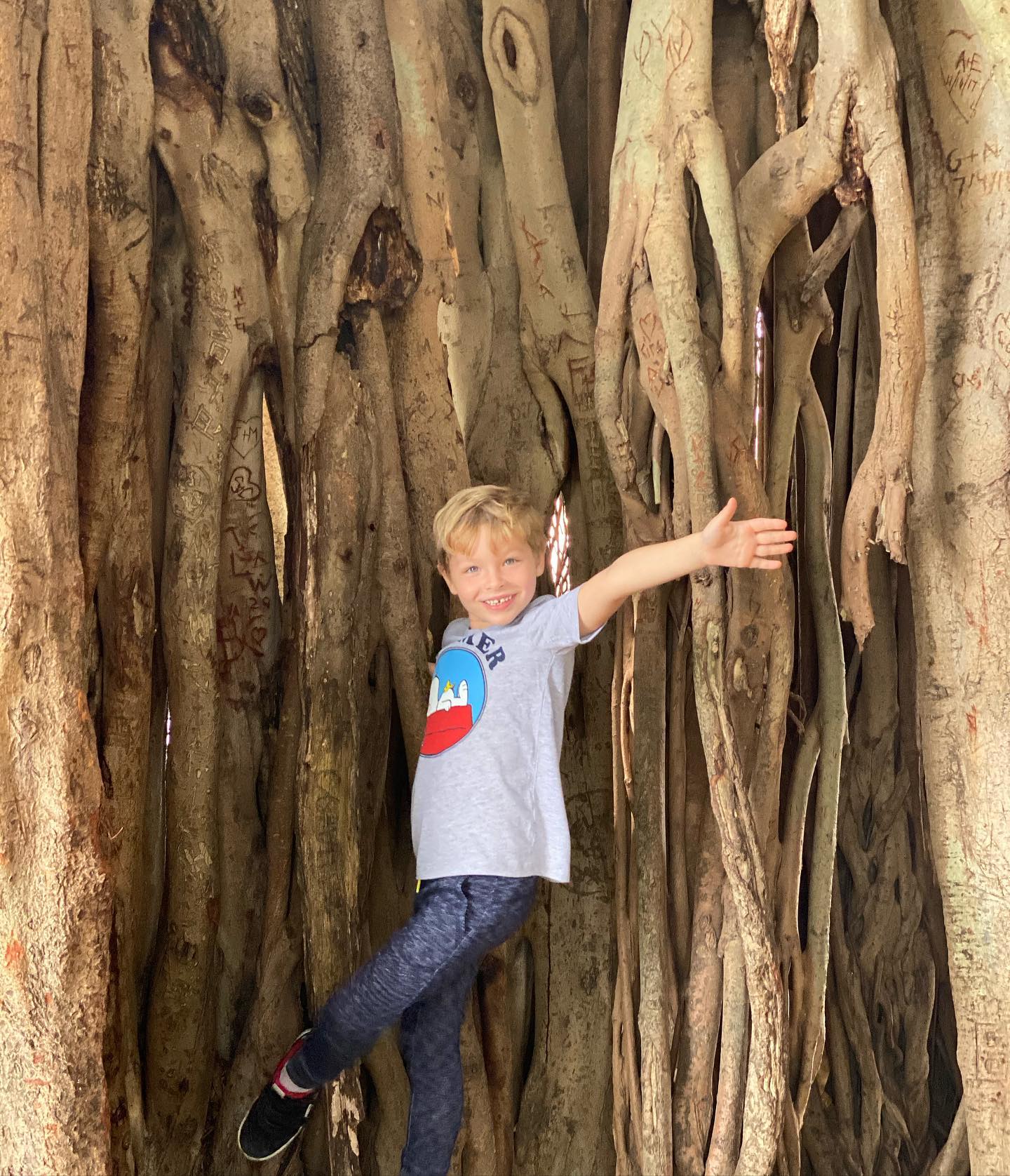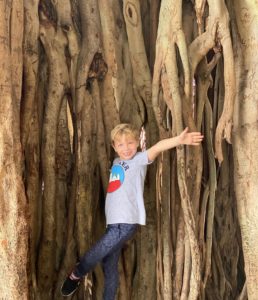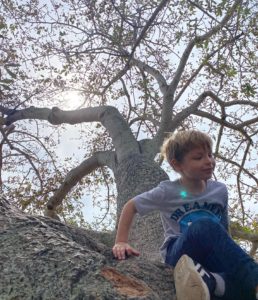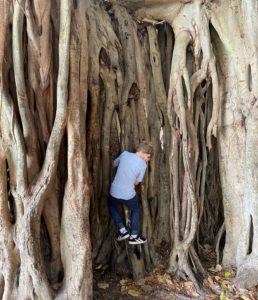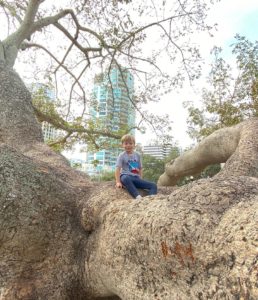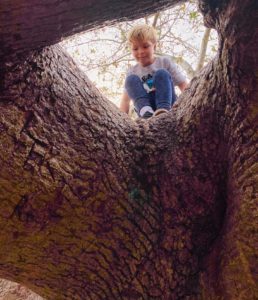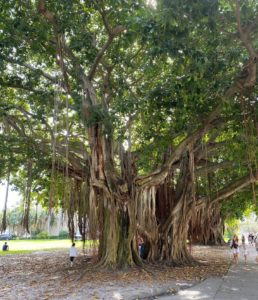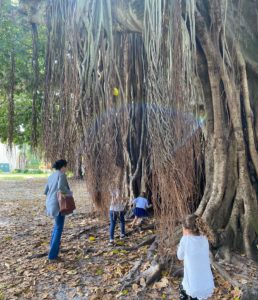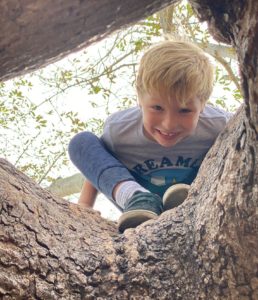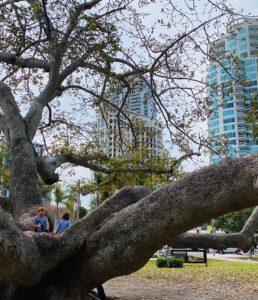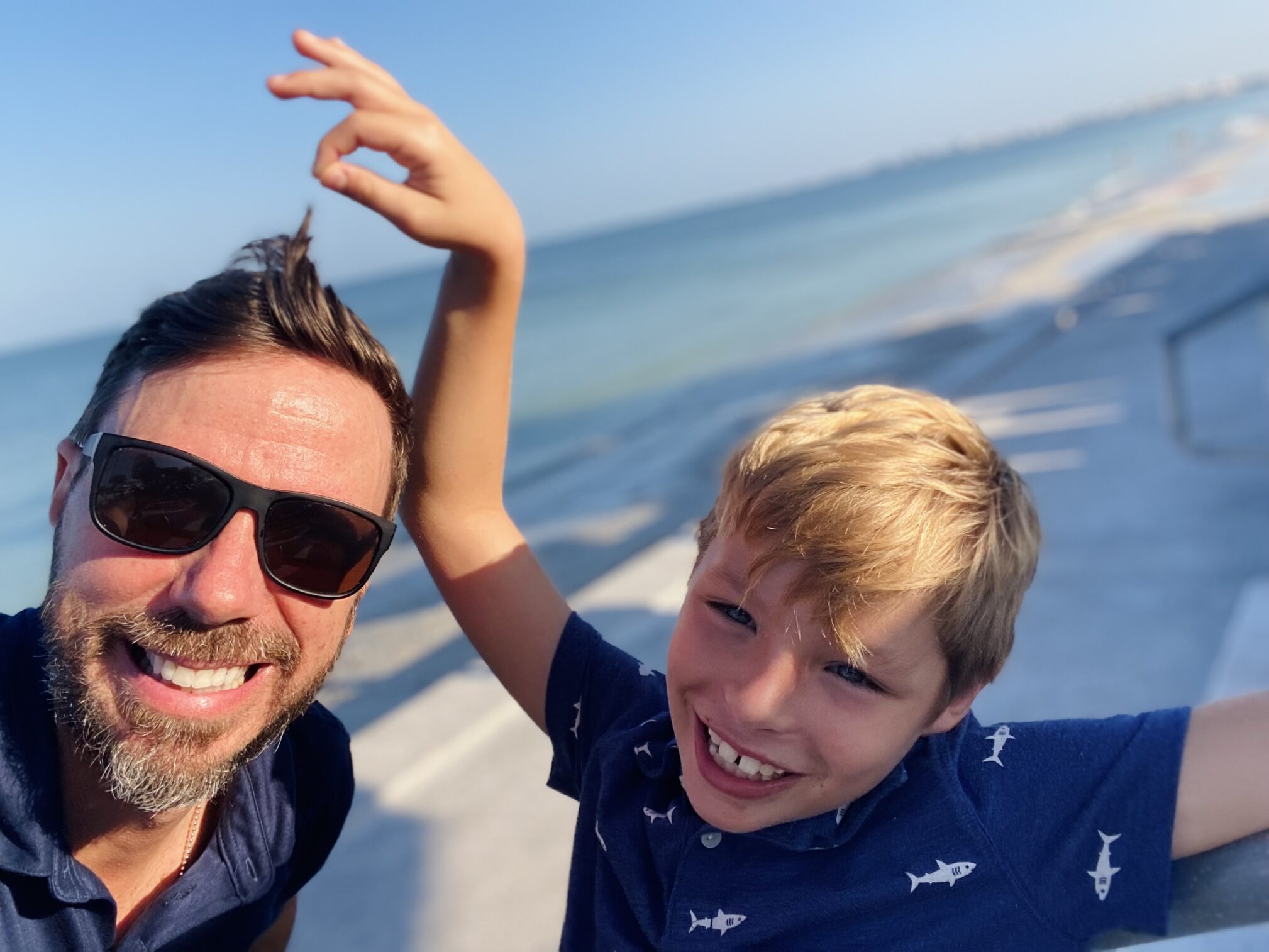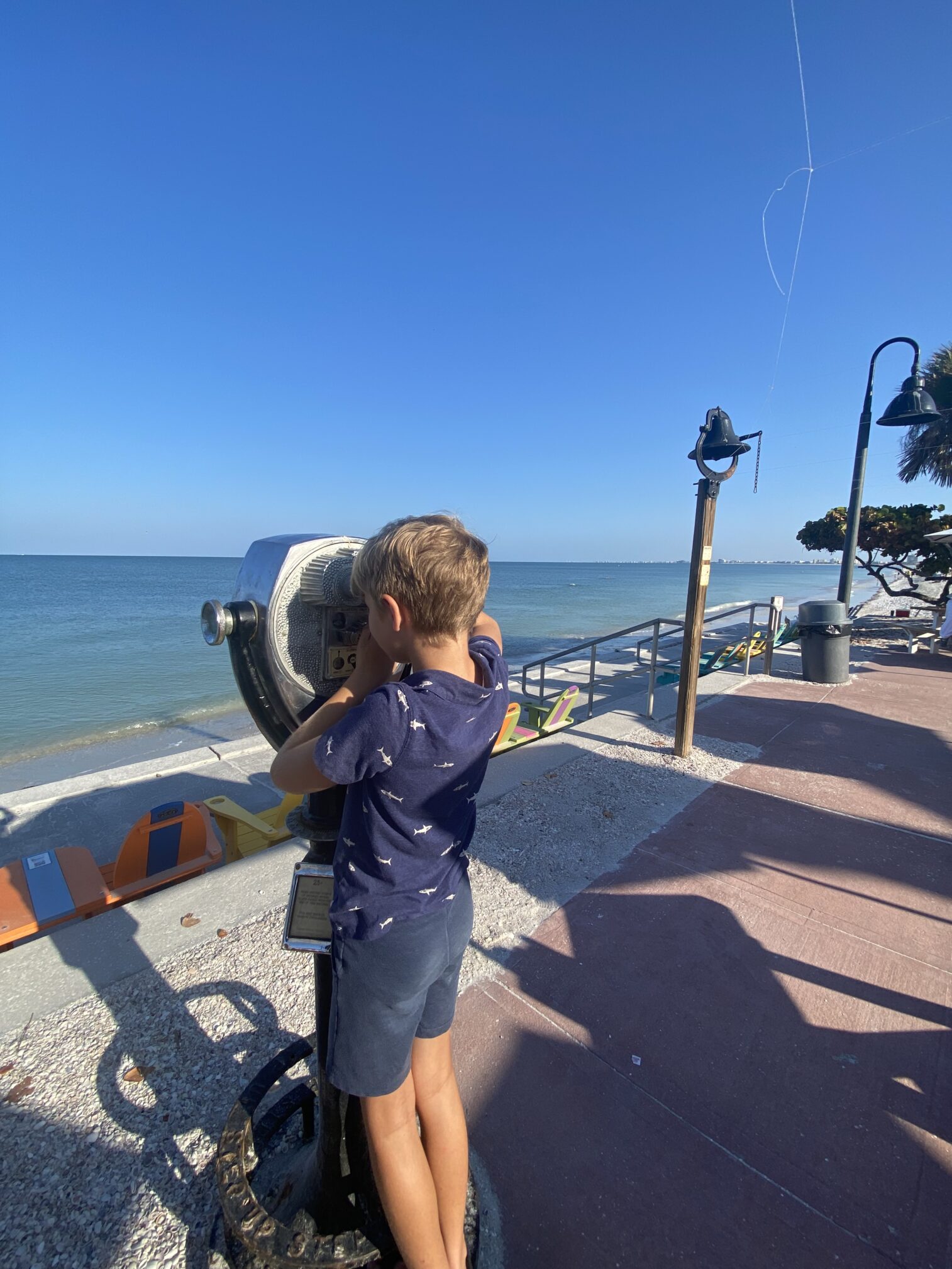The Huge Banyan Trees and Bombax Tree in Downtown St Pete
Published on 02/03/21: Colt’s favorite trees downtown are worthy of their own post! I’m certain these beauties are special to many around the area. Am I right?
First up, the sprawling Banyan trees in North Straub Park, directly across from Alto Mare Fish Bar and Annata on Beach Drive. They are massively gorgeous and estimated by arborists to be around 90 years old. Did you know the largest Banyan tree is located in India and covers 4.7 acres!? 😳
Next is the Bombax tree located on the south lawn of the Museum of Fine Arts, St. Petersburg, Florida. This very unique and beautiful tree was planted by the museum’s first Director, Rexford Stead, in 1965. Per the museum, it stood around 3ft high when planted. Colt says this would be the ‘perfect tree for a fort”and is on his list of ‘tree goals’. I can see why. I’m lucky to have this Bombax located directly across street from my office window! (at Northstar Realty)
Do you have a favorite tree(s) in the area? Even better, pictures of those trees to share in the comments? Lighting was tough for my pics. Took them quickly, while trying to keep an eye on my 5yr old Tarzan.
General Address of the trees: 216 Beach Drive NE, St Pete FL for the Banyan trees and 255 Beach Drive NE for the Bombax.
I’m a St Pete Realtor covering the Tampa Bay Area! I truly love Saint Petersburg and the surrounding areas! I started LovingStPete on Facebook and Instagram to help clients and others learn about our area. It’s now followed by over 56 thousand people! If you have any real estate questions, simply contact the trusted local St Petersburg real estate team. My past includes developing a vacation rental advertising company, which I ran for a decade, and then sold to HomeAway/VRBO.
Exploring Banyan and Bombax Trees Around St. Petersburg, Florida
St. Petersburg, Florida, is known for its beautiful parks, scenic waterfronts, and diverse plant life. Among the standout features of the region’s flora are the impressive banyan and bombax trees. These trees not only add to the city’s aesthetic appeal but also offer fascinating insights into tropical and subtropical ecosystems. Here’s what you need to know about these magnificent trees and where you might encounter them in and around St. Petersburg.
Banyan Trees
1. Overview: The banyan tree (Ficus benghalensis) is a remarkable species native to the Indian subcontinent. It is known for its unique growth habit,
Exploring Banyan and Bombax Trees Around St. Petersburg, Florida
St. Petersburg, Florida, is known for its beautiful parks, scenic waterfronts, and diverse plant life. Among the standout features of the region’s flora are the impressive banyan and bombax trees. These trees not only add to the city’s aesthetic appeal but also offer fascinating insights into tropical and subtropical ecosystems. Here’s what you need to know about these magnificent trees and where you might encounter them in and around St. Petersburg.
Banyan Trees
1. Overview: The banyan tree (Ficus benghalensis) is a remarkable species native to the Indian subcontinent. It is known for its unique growth habit, where aerial roots extend from the branches and eventually become trunk-like structures, creating a dense, sprawling canopy. This growth pattern allows the banyan tree to cover a large area and create a network of interconnected trunks.
2. Features:
- Canopy and Aerial Roots: The banyan tree’s most distinctive feature is its aerial roots, which descend from the branches and anchor into the soil, forming new trunks. This creates a dense, shaded area beneath the tree.
- Large Leaves: The tree has large, glossy leaves that provide excellent shade and contribute to its lush appearance.
- Size and Spread: Banyans can grow to impressive sizes, with some trees spreading over several acres. Their expansive canopies offer significant shade and habitat for various wildlife.
3. Where to Find Banyan Trees: In St. Petersburg, banyan trees are less common but can be found in certain parks and botanical gardens. Notable spots include:
- Sunken Gardens: This historic botanical garden often features banyan trees among its diverse collection of tropical plants. The lush environment and shaded paths provide a great setting to admire these majestic trees.
- Local Parks and Residences: Some private residences and city parks may also feature banyan trees. Look for their distinctive aerial roots and expansive canopy.
Bombax Trees
1. Overview: The bombax tree (Bombax ceiba), also known as the silk cotton tree or kapok tree, is native to tropical regions of Africa, Asia, and the Americas. It’s known for its striking appearance, especially when in bloom. The tree produces large, showy flowers and has a unique seed pod covered in fluffy fibers.
2. Features:
- Flowers: Bombax trees are renowned for their vibrant flowers, which can be red, pink, or white. The flowers are large and tubular, attracting pollinators like bees and birds.
- Seed Pods: The tree’s seed pods contain fluffy fibers that are used in stuffing and insulation, known as kapok. The pods split open when mature, releasing the fluffy fibers.
- Trunk and Branches: The trunk of the bombax tree is often thick and may have a slightly buttressed base. The branches spread out widely, creating a broad, shaded canopy.
3. Where to Find Bombax Trees: Bombax trees are less common in St. Petersburg compared to banyan trees, but they can sometimes be found in botanical gardens or specialized plant collections. Look for them in:
- Botanical Gardens and Arboretums: Local gardens that focus on tropical and subtropical plants might feature bombax trees. These locations are excellent for seeing a variety of exotic trees and plants.
- Specialized Nurseries: Some nurseries and plant shops specializing in tropical species may have bombax trees available.
Enjoying These Trees
Both banyan and bombax trees add a touch of exotic charm to the landscapes they inhabit. When visiting locations like Sunken Gardens or botanical gardens, take the time to observe the unique characteristics of these trees. The banyan’s sprawling roots and canopy create a sense of awe, while the bombax’s vibrant flowers and distinctive seed pods offer a glimpse into the diversity of tropical flora.
Whether you’re a local resident or a visitor, exploring these remarkable trees provides an opportunity to appreciate the beauty and complexity of the natural world. So, the next time you’re in St. Petersburg, keep an eye out for these fascinating trees and enjoy the lush, tropical atmosphere they bring to the region.
